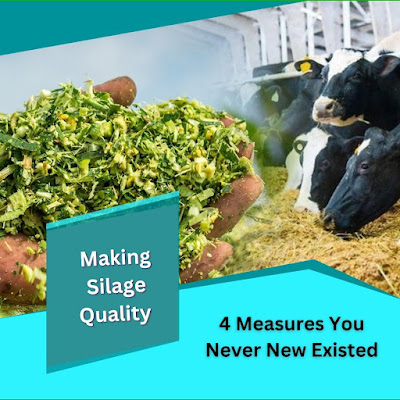Handle These Situations to Make High Quality Silage
It doesn't matter how
strongly you plan and manage your silage production plans. However, some
uncontrollable weather and wildlife can delay our plan to cover our crop or
air-reintroduction time. If you are trying to fend off expected cases, you
understand that uncontrollable situations like these can give you a tough time.
Fortunately, we at Silage Agro have
got some tips for you to handle even uncontrollable situations and produce
high-quality silage.
How to control uncontrollable situations?
Let us look at the
three everyday unexpected situations you can handle with our tips and produce
high-quality sugarcane, corn, grass, and Wheat
Silage.
Air stress issue
During storage, we must
ensure that the farm atmosphere remains completely anaerobic so that the silage
quality remains stable until we open it and feed it to our lovable animals.
However, even if we apply the best management method, unpredictable conditions
can allow air to work its way into your Silage
Bales. Let's give you an
example. Let's say unnoticeable holes that animals create or leak.
When the silage
atmosphere becomes aerobic because of the above, many processes will happen,
increasing the pH value and decreasing the DM and other valuable nutrients,
suppressing the increase in pH. As a result, your silage will be full of
nutrients.
Testing Silage Inoculants
When you apply suitable
quality silage inoculants, you can get the perfect fermentation process, even
when harvest conditions are not right. In addition, studies showed that using
good quality inoculants successfully suppressed the increasing pH value due to
animal attacks or leaks.
To prove this point,
experts conducted experiments by creating such holes manually. The
professionals got the exceptional result as the excellent quality inoculants
helped the silage product reduce the pH value and improve taste and quality. So
applying inoculants to your silage product is suitable for fermentation and is
worth your time and money, and Silage Agro would advise you the same.
Natural Intermediary Capacity
A silage crop is known
for its high buffering capacity due to high levels of protein and ash.
Unfortunately, this higher buffering capacity leads to the crop becoming a crop
that's hard for you to ensile. The slower drop in pH in the front end of the
fermentation also adds to the issue. There are many disadvantages of slow
reduction in pH value. Let's take a look.
●
A slow drop in pH increases the crop's time to prohibit
synthetic protein degradation and harmful microorganisms like clostridia.
●
The more time it takes to lower the silage's pH value, the more
quality it will lose, and it will be near impossible for you to get back the
desired quality.
●
A lower rate of pH value reduction can damage the dry matter,
which can harm your animals.
So to reduce pH value
at a faster rate, you should use suitable quality inoculants, and you are good
to go.



Comments
Post a Comment